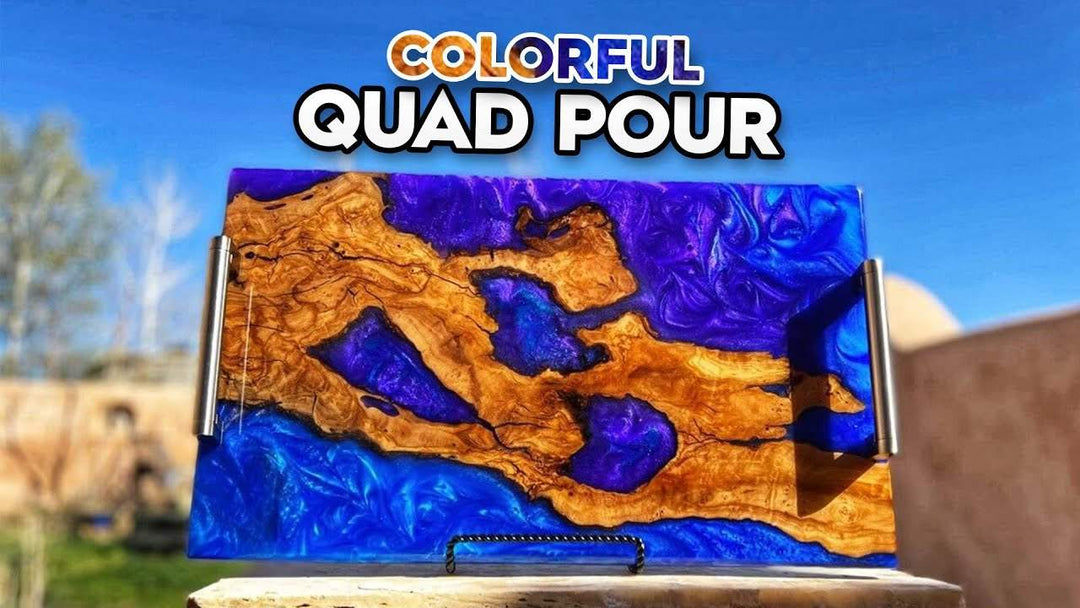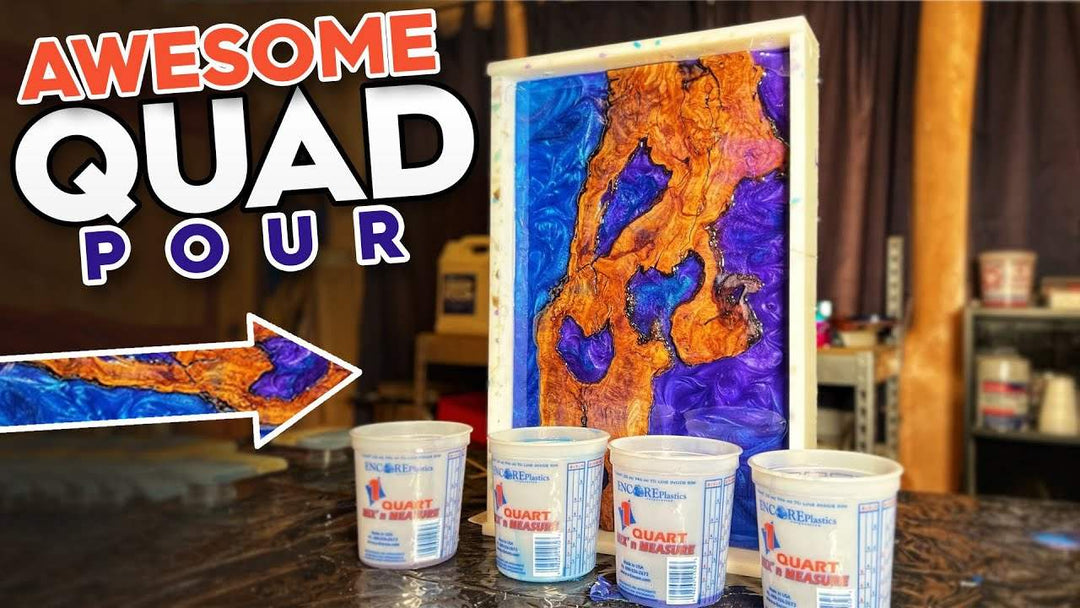
Tips And Tricks For Finishing An Epoxy Resin Piece
In preparation for a flood coat, it’s vital to seal the surface so that imperfections do not appear. In this tutorial, Steve demonstrates how to go about finishing your epoxy piece properly post-flood coat!
Skill Level: Beginner/Intermediate/Expert
Estimated Working Time: 24-48 Hours
What You’ll Need:
- Upstart Epoxy Table Top Resin
- Rubber Gloves
- Heat Gun
- Sander
- Paper Towels
- Isopropyl Alcohol
- Blowtorch
- Walrus Oil
Mixing Your Epoxy Resin
We're starting with a large charcuterie board that we made with our deep pour epoxy and a good pair of rubber gloves. Whenever you're doing a seal coat, a rule of thumb you should follow is that each square foot should get one ounce of epoxy. For flood coats, the rule is three ounces per square foot. We decided to hit this project with 24 ounces.
Next, we mixed up our table top epoxy, utilizing the 1:1 ratio of the epoxy and the hardener- that means 14 ounces of Part A, and 14 ounces of Part B. We mixed that with a stir stick instead of a drill this time, because drills can add a lot more air bubbles than stirring sticks. Since this is a flood coat, you want it to be flawless, so the less bubbles, the better! This is a good rule of thumb for seal coats as well.
Don’t worry if you see some cloudiness in there- that’s normal when you first start stirring and mixing. The goal is to get that cloudiness out of there, to where your formula is translucent and clear. Once you see that that cloudiness is disappearing, that means you’re getting closer to finishing the mixing process.

The First Pour
After our epoxy has been mixed we’re ready to pour, starting in the middle and then allowing the epoxy to work its way out to the outside, as the epoxy will self level. With either your hand or a paintbrush, make sure the epoxy is spread out evenly. Make sure that the epoxy drips over, because it will help with sealing up those edges perfectly. We’re now ready to take a heat gun to extinguish some of these bubbles.

What To Do While It Cures
Now we're going to give the project 24 hours to cure, but we'll be monitoring it throughout, just to make sure no debris or objects fall into it. You can even keep your project covered throughout the cure time to keep your work safe. If you see any bubbles during that time, don’t be afraid to use your heat gun!
After 24 hours, we’re back! We saw some air pockets in our work, so we sanded at 120-grit to get rid of them. After the little imperfections were gone, we sanded the entire project to scuff it up a bit, which creates a mechanical bond. That brings any underlying imperfections to the surface, which shows us exactly what areas we need to focus on for our next pour.
When we’re done, we take a paper towel to wipe off the surface dust and get rid of some of the tension, which comes from scraping the epoxy. Alcohol is amazing for removing dust, so we added that to our project, spraying a little at a time. We normally use 70-90 isopropyl alcohol, but use what you have!

Our Second Pour
Now we're ready to give it another coat. If you’re not satisfied with the way the piece has come out, you may want to do multiple seal coats. Don’t be afraid to do more than one if you think your work needs it. We put on our gloves, mixed up another 24 ounces of table top, and did this all again. We started from the middle and let it float evenly across the whole piece, using a spreader to move the epoxy around faster. Don’t forget to coat your sides, then take a blowtorch to keep the project flawless. We allowed this to cure for another 24 hours, checking in on it occasionally.

The Finishing Steps
Now it's another day, and our piece cured to perfection with a glasslike finish! We took it outside and sanded off all the drips and all the bubbles from both coats. Then we sanded the entire project, starting at 80-grit and going all the way up to 220-grit.
After that was done, we added some walrus oil for shine. We allowed this to cure for about 8-12 hours, and then took another paper towel to wipe off any excess that was on the project. You're all done! You can do as many seal or flood coats as you see fit on your project- do whatever it takes to get that gorgeous, flawless finish.





